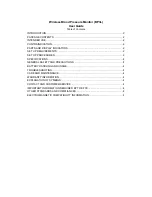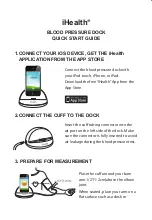
English-6
4. Connect all cables to the appropriate connectors (Figure C.1). When using the USB cable, connect the B type connector
to the USB upstream port on the right back side of the monitor and the A type connector to the downstream port on the
computer (Figure C.1a). If using the cord from a USB device, plug into the downstream port of the monitor.
NOTE:
Incorrect cable connections may cause abnormal operation, damage display quality/components of LCD module and/
or shorten the module’s life.
NOTE:
Use an audio cable without a built-in resistor. Using an audio cable with a built-in resistor turns down the sound.
NOTE:
Adjustment of the volume control as well as the equalizer to other settings than the center position may increase the
ear-/headphones output voltage and therefore the sound pressure level.
Figure C.1a
A Type
B Type
A Type
B Type
B Type
Figure C.1
Power cord
30° Tilt
DisplayPort IN/OUT*
DisplayPort IN/OUT*
2
HDMI 2
HDMI 2 (HDCP1.4)
(HDCP1.4)
Highest
Stand
Position
USB 3.0 Upstream 2
USB 3.0 Upstream 2
ControlSync IN/OUT*
ControlSync IN/OUT*
1
USB 3.0 Downstream
Headphone
Figure C.2
USB 3.0 Downstream
USB 3.0 Downstream
USB 3.0 Downstream
USB 3.0 Upstream 1
USB 3.0 Upstream 1
HDMI 1
HDMI 1 (HDCP2.2)
(HDCP2.2)
*
1
: See page 10.
*
2
: See page 12.
5. To keep the cables neatly organized, place them into the cable management system that is built into the stand.
Place the cables in the hooks fi rmly and evenly (Figure C.2 and Figure C.3).
NOTE:
Cable cover is not removable.
6. Please check that you can still, raise and lower the monitor screen after you have installed the cables.
Power Cord
HDMI Cables
DisplayPort Cables
ControlSync Cables
Figure C.3
7. Connect one end of the power cord to the AC inlet on the back of the monitor and the other end to the power outlet.
NOTE:
Please refer to Caution section of this manual for proper selection of AC power cord.









































